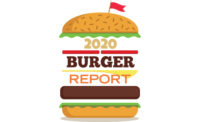Fresh seafood experienced phenomenal dollar sales percent growth of 6.3% to $7.1 billion, for the year ending Nov. 28, 2021, according to Chicago-based IRI. This remarkable sales growth continued the massive sales growth the category experienced in 2020 and as the total meat category dipped a couple of points, says Chris DuBois, IRI’s senior vice president of Americas protein practice leader. In turn, looking at dollar sales percent growth vs. two years ago, fresh seafood jumped 31.3% for the year ending Nov. 28.
Fresh seafood volume sales for the 52 weeks ending Nov. 28 remained flat, while volume sales percent change vs. two years ago grew 21.6%.
Frozen seafood also grew 4.1% in dollar sales to $7.3 billion for the year ending Nov. 28, but grew 40.4% vs. two years ago. Frozen seafood volume dipped 1.1% off of 29% volume growth vs. two years ago.
“The frozen segment is doing exceptionally well, as consumers are still opting for frozen or shelf-stable options that can help reduce trips to the grocery store and foodservice operators aim to reduce food waste,” says Megan Rider, the Alaska Seafood Marketing Institute (ASMI)’s domestic marketing director.
Shelf-stable seafood with $2.5 billion in sales is not quite the success story of the other two segments. It experienced an 11% drop in dollar sales vs. a year ago, but 6.5% gains vs. two years ago. Shelf-stable seafood volume decreased 12.1% vs. a year ago, but volume grew 2.6% vs. two years ago. The data suggests that consumers aren’t stocking up on shelf-stable tuna and salmon as they were in 2020, DuBois says.
At almost 20% of sales, value-added seafood is a very large component of the category, especially shrimp and salmon, and is more than double the percent value of added sales in the regular meat case (approximately 8 percent for total meat), IRI’s DuBois says.

Eating more seafood
The good news continues as 41% of consumers want to consume more seafood in 2022, according to a recent IRI survey.
“2020 was a breakthrough year for seafood and not just the frozen seafood that you get in boxes, but fresh seafood really had a good year,” DuBois says. “What happened is that people were hesitant to buy seafood because they were always afraid to cook it. What we saw is that people tried new things and learned how to cook more new proteins, new dishes, new recipes, and fish became a big part of that. That barrier to education fell down during Covid for both frozen and fresh, and this year it will continue.”
Early in the pandemic, as many foodservice operations were put on hold, consumers turned to home cooking to get their seafood fix, trying out new species and becoming familiar with various cooking techniques, Rider says. According to ASMI’s 2021 research with Datassential, half of consumers were cooking seafood more in 2020 than they did the year prior, and 26% purchased seafood for the first time during the pandemic. “And while we are beginning to see the foodservice industry rebound and contribute to overall seafood sales, consumers continue to cook at home just as often,” she says.
The continued pandemic also has put attention on healthy foods and supply chains. Seafood is low in saturated fats and high in omega-3 fatty acids, and wild seafood is low in contaminants, and, if sourced from regions like Alaska, protected from overfishing, Rider says. “This adds the value of sustainability that consumers are increasingly seeking from the food they eat,” she explains.
For example, consumers are more likely to purchase seafood that is wild and sustainable, with 86% of consumers agreeing they would buy seafood over other proteins if it was wild-caught. Additionally, 85% agree they would buy more seafood if it was sustainably sourced, according to Seafood Success Powered by Alaska Retail Consumer Research, a 2021 report from Datassential/ASMI.

Innovation in Seafood
Innova Market Insights, in Arnhe, the Netherlands, tracked the launch activity of U.S. fish and seafood products. In 2020, activity was at average levels compared with previous years. A dip of new products occurred toward the end of 2020 and beginning of 2021, at which new releases began to increase again. Key new product development trends that are driving this category are:
- gravitation toward fish and seafood owing to high protein and omega-3,
- demand for convenient food solutions,
- wild-caught claims,
- locally and sustainably sourced launches,
- ethnic and exotic recipes (for example, pickled sea urchin) and
- traditional tastes.
Top fish and seafood areas with the highest recorded growth tacked within the category’s launches considering their compound annual growth rate (CAGR) from the fourth quarter 2016 to the third quarter of 2021 are herring with 32% growth, scallop with 19% gains, and mackerel with a 6% increase, Innova reports. Additionally, the GMO-free claim thrives with 46% CAGR from 2016 to 2020. Innova also finds that spicy and smoked flavors are on-trend along with more fish and seafood appearing in pouches, which recorded 13 percent CAGR from 2016 to 2020.
In food service, ASMI is seeing a greater attention to waste reduction, so in addition to using frozen seafood, operators are aiming to use the whole fish, for example, by using fish cheeks and collars in stews or other dishes. Within retail, recent advances in packaging, particularly vacuum seal skin packing, continue to improve to maintain freshness, flavor, and appearance of seafood, and in the interest of sustainability, producers like OBI have recently updated their packaging to be completely recyclable.
“As consumers continue to desire high-protein alternatives, there are also some exciting new products coming to market, such as noodles made entirely of wild Alaska pollock, for example,” ASMI’s Rider says.
Growing the industry
In order to move the industry forward, ASMI says the segment must emphasize taste and health benefits that consumers crave along with focusing on sustainability, as consumers are increasingly dedicated to seeking out seafood that is sourced responsibility. The number of sustainability-focused seafood shoppers jumped from 29% in 2019 to 41% in 2021, according to the 2021 FMI Power of Seafood Report/Nielsen IQ.
Innova sees seafood has opportunities in more value-added and premium options along with leveraging the awareness of the health benefits of omega-3 fatty acids and moving toward sustainable packaging, e.g., BPA-free, plant-based packaging. Moving forward, the industry will see increasing concerns around sustainability, plant-based eating and alternatives in the market, and rising consumer demand for local and fresh produce, Innova says.
In terms of trends, ASMI expects to see new ways of preparing seafood with a focus on ease, as consumers stave off cooking fatigue. For example, the idea that most seafood can be cooked straight from frozen or other tips that have taken off on social media in recent months.
IRI’s DuBois expects the seafood category to have another great year that looks similar to 2021. This year, pricing also might have a slight effect on seafood sales as supply chains have been challenged and transportation costs have skyrocketed. DuBois believes the industry has done a great job of engaging consumers, though, and now it can build on that progress.
“The biggest thing is getting variety into the cases and just continuing to grow the base,” he says. “The more you get consumers a little bit more variety, the more they are going to be excited and continue to come back to the case.”





Report Abusive Comment